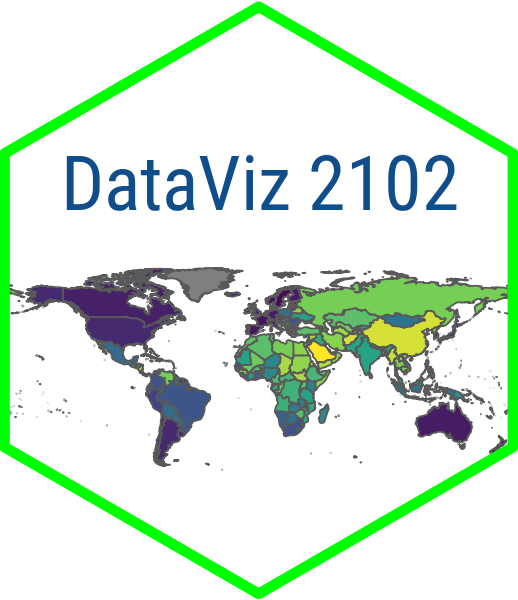Bar Charts and Histograms
October 27, 2023
The Grammar of Graphics
- Data viz has a language with its own grammar
- Basic components include:
- Data we are trying to visualize
- Aesthetics (dimensions)
- Geom (e.g. bar, line, scatter plot)
- Color scales
- Themes
- Annotations
Let’s start with the first two, the data and the aesthetic.
Gives us the axes without any visualization.

Now let’s add a geom. In this case we want a bar chart so we add geom_col()
OK but that gets the idea across but looks a little depressing so…

…let’s change the color of the bars by specifying fill = "steelblue".
Note how color of original bars is simply overwritten.

Now let’s add some labels with the labs() function:
And that gives us…

Next, we reorder the bars with the reorder() function.
This way, we get a nice, visually appealing ordering of the bars according to levels of democracy…

Jumping ahead a little, let’s change the theme to theme_minimal().
Gives us a clean, elegant look.

Note that you can also save your plot as an object to modify later.
Which gives us…

Now let’s add our labels.
So now we have…

Now let’s add our theme.
Voila!

Change the theme.

Your Turn!
Use your own wrangled data or this code to get started:
glimpse()the data- Find a new variable to visualize
- Make a bar chart with it
- Change the color of the bars
- Order the bars
- Add labels
- Add a theme
- Try saving your plot as an object
- Then change the labels and/or theme
10:00
Now Try a Histogram
Use this code or your own wrangled data to get started
- Pick a variable that you want to explore the distribution of
- Make a histogram
- Only specify
x =inaes() - Specify geom as
geom_histogram
- Only specify
- Choose color for bars
- Choose appropriate labels
- Add a theme
10:00
